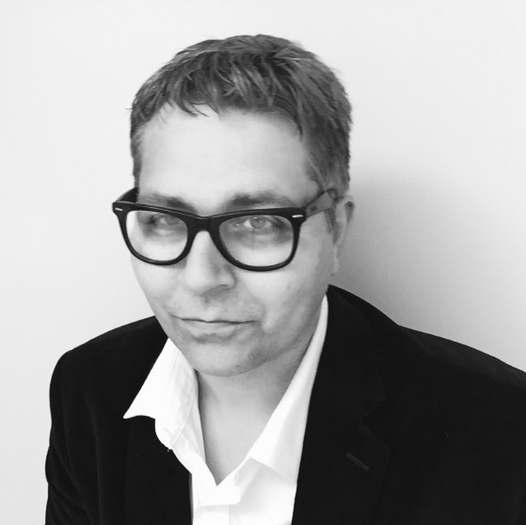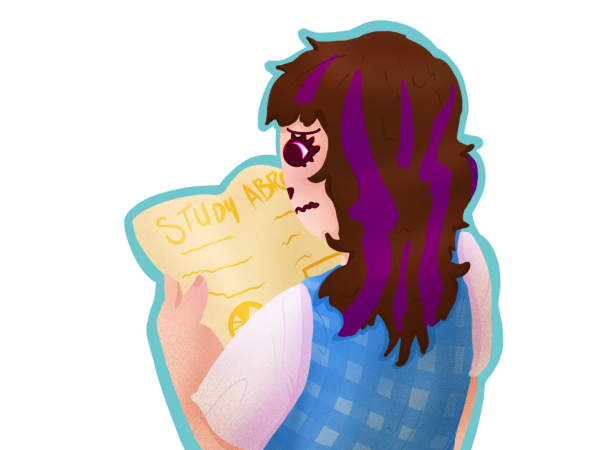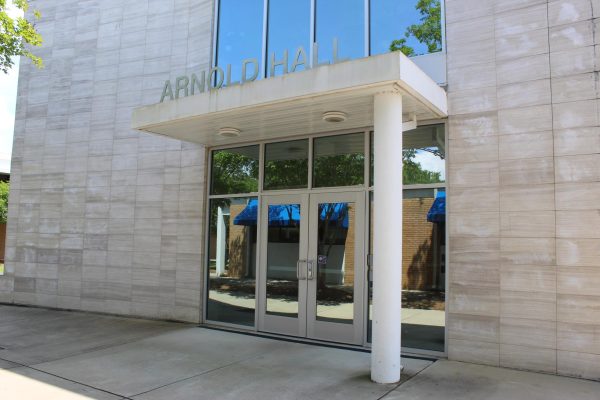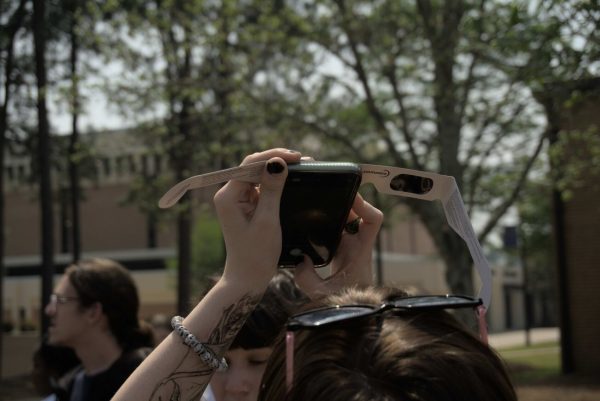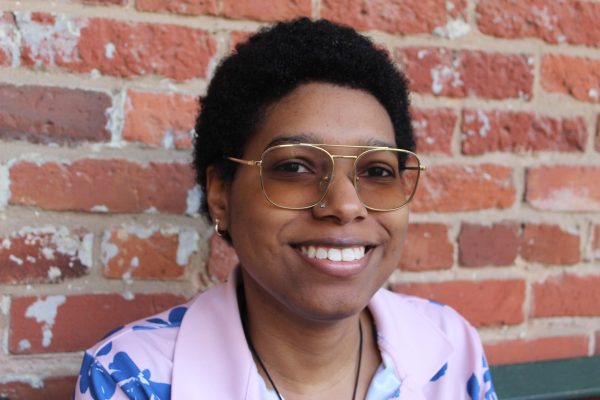The Results of the Faculty Quality of Life Survey
CSU recently administered a survey in order to assess the faculty’s workload, job satisfaction, and quality of life. What do the results mean for the university and the student body?
In early Feb., CSU released the results of the Faculty Quality of Life Survey, which aimed to assess the “workload, job satisfaction, and quality of life information from CSU faculty with at least a 50% teaching workload.” Dr. Clinton Barineau, professor of geology, and Dr. Susan Hrach, professor of English and director of the faculty center for the enhancement of teaching and learning, conducted the survey via email and 283 unique CSU faculty members participated.
“As an untenured assistant professor coming to the university, you’re very busy,” said Dr. Barineau. “You tend to look inward a lot. Stepping into the position of Chair [of the Earth & Space Sciences], I realized pretty quickly that my experience of working long hours and not getting a lot of sleep was actually not unique to me, that a lot of faculty experience that. I had this qualitative data, but I wonder[ed] if we can actually quantify this.”
This question prompted Dr. Barineau to start conversations across the university, and this eventually led him to seek out Dr. Hrach. Barineau looked to work with Hrach as he valued both her thoughts and input, as well as her established position in the university.
“It’s been an increasing expectation of faculty that we are engaging our students in hands-on activities and following the research on how learning works,” Hrach stated. “I told Clint right away, I’m interested in this data as well, but because I want to fix something. It’s not just for the sake of complaining but to see where solutions might be possible.”
Hrach and Barineau had seen similar surveys conducted at other institutions and modeled their methods after some of those. “One challenge of the survey is that it’s voluntary participation,” said Hrach. Because not everyone is required to respond, the results may not be representative of the demographics.
The College of Letters and Sciences and the College of the Arts were overly represented in the data while the College of Education and Health Professions and the College of Business were underrepresented. “The results that came out of those colleges are actually not that different from what we got from the other two colleges; it’s just not necessarily as strong a representative sample.” Another challenge was that convincing people to take part in this survey required a tremendous amount of trust that the results would remain anonymous.
The researchers conducted the survey anonymously in two phases using SurveyMonkey, a popular surveying website. Phase I of the survey started on 15 Oct. 2018, and ended on 15 Apr. 2019, asking 10 questions about the faculty’s daily workload distribution, their perception of how their workload affected their quality of life, and how much control they felt like they had over their workload. Phase II of the survey included 27 questions and started on 15 Apr. 2019, and ended a month later.
In order to implement this phase, Dr. Barneau utilized a random email generator and eventually settled on sending 27 questions to six random emails each day. Barneau aimed to send these emails every morning, including Christmas morning and New Years morning.
Results from Phase I indicated that faculty worked approximately a mean total of 10 hours a day during the work week, seven of those hours being worked on-campus, and three of those while off-campus. On weekends, faculty worked a median total of 16.5 hours, accounting for a little less than 20% of their weekly workload.
“The ‘work’ of ‘teaching’ makes demands that are qualitatively different from most other types of work,” responded Dr. Ramesh Rao, professor in the department of communication. “So, it is not always about the ‘number of hours worked,’ but what are the specific kinds of stresses and demands that teaching makes on a person.”
The survey requested that faculty members report their workload. After both phases were completed, the data “suggested that the majority of CSU faculty work 50 hours each week, as half of all faculty reported an average work week exceeding 55 hours,” to quote the results of the survey.
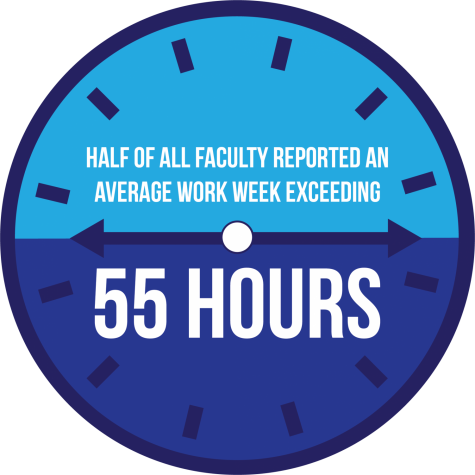
Interestingly, the category of lecturers, who have the highest teaching loads but fewer expectations in the area of committees and research, had the higher level of contentment and feeling of control over their time. One theory that Hrach mentioned is that the highly focused nature of a lecturer’s duty allows them to feel more in control than a faculty member who may have several classes to teach, requirements to serve on committees, and research expectations.
“I had thought we would see a reasonable correlation between people who work the longest hours and the people who were least happy in their job. It turns out this was not the case,” said Barineau.
“All of us probably are used to coming out of our doctorate programs and not getting adequate sleep. For some people, this is a continuation of things they’ve done for many, many years. It turns out [that] those faculty who felt they had the most control over their workload […], they were the ones that were the least likely to report that their workload had a negative impact on their quality of life.”
According to the survey, more than half of CSU faculty don’t get adequate exercise or enough sleep. The findings also showed that one-third of faculty work occurs off-campus, and that the majority feel that their workload is unreasonable.
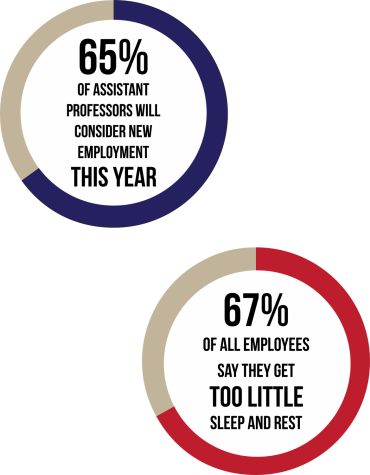
“I think I get enough sleep and exercise,” stated Dr. Patrick Jackson, English professor, in an email to The Saber. “If I don’t, it’s not because of my job. But my first few years as an Assistant Professor were different. I was definitely so stressed out then that it would interfere with my sleep and health.”
“[But] teaching would improve significantly if professors were given a lighter workload,” added Jackson. “If there is any specific place to focus attention on, it’s the Assistant Professors, the Lecturers, and the part-time instructors. They get the worst of it. They work longer hours than anyone else and they get paid the least. If anyone’s workload should be relieved, it’s them. No one should be teaching five classes.”
The amount of credit hours that must be covered by teaching faculty can often stretch some professors to take on more than they ideally would, thus encroaching on time that could be spent on creative endeavors or personal wellness. Barineau cites the current state of things partly as continued fallout from the recession of 2008.
“We were asked basically to do more with less, which was a fair request. Everyone across the country had to do more with less. As the economy recovered, however, we haven’t necessarily seen that state budget recover.”
Another startling result of the survey was that a majority of CSU faculty expressed an interest in seeking employment elsewhere. This intent was strongest in Assistant Professors. “What that means in practice is hard to say,” said Hrach. “Does that mean ‘I’m just keeping my options open’, or does that mean actually sending out cover letters?”
“I know from some previous studies that have been done […] across multiple universities asking similar questions […], their results had maybe one-third of faculty considered leaving their job, and the fact that we had a little over half of ours is an area of concern.”
Despite these findings, CSU faculty overwhelmingly felt passionate about their creative endeavors and that their teaching benefited their students’ lives.. “Another thing I was pleasantly surprised by was the fact that so many of our colleagues felt we have a really strong sense of community here at CSU,” said Barineau. “I recognized about my own department that we feel like a big family. We’re not alone in that; so many other people around the university feel that way.”
“I don’t think there’s going to be a single fix,” Hrach commented in regards to the findings of the survey. “I think knowing that time is such a valuable resource and being very conscious of every new initiative on everybody’s time is a good place to start.” Hrach has heard calls for more non-monetary recognition to reward good work. She is also in talks to set up an informal online thank-a-professor program where students could, anonymously or not, uplift their instructors for their efforts. “We also have the opportunity to do more wellness initiatives.”
“We have started a program that I am in charge of, sort of a First Year Experience program for first-year faculty,” added Hrach. “They have a chance to form relationships with each other and learn institutional culture in ways that might make them feel more connected. I think that’s been a successful program. But it didn’t start until three years ago, so it hasn’t had time to make its way through the culture at large.”
Barineau and Hrach agreed that they felt the university had come a long way in their tenure at CSU and that the survey could lead to productive discussions. “All of us want to see CSU to be successful. That’s our main goal,” said Barineau. “We want our students to be successful; we want the university to be successful; we want our program to be successful. We can only make sure that happens if everyone feels like they are working toward that common goal.”
“I think the conversation that we’re able to launch as a result of having some actual data […] is going to be really exciting,” Hrach added. “This is what I had hoped in that it’s the beginning of the way to find solutions now that we have a better sense of where the pain points are.”
Though The Saber reached out to President Markwood and five members of the provost for comment via email and several phone calls, The Saber was unable to receive a direct response from either. Markwood’s assistant offered to answer any questions but Markwood himself was unable to comment until after spring break, and the provost did not contact The Saber back after two phone calls.
The presentation demonstrating the results of this survey can be found on the CSU Faculty Senate Minutes page and the final results can be accessed here for those with a CSU email account.
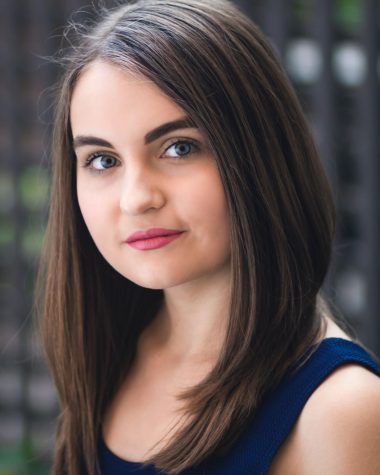
(She/her) Ashley is a theatre major who loves to focus on issues that concern the community of Columbus. She graduated from CSU in Spring 2021,
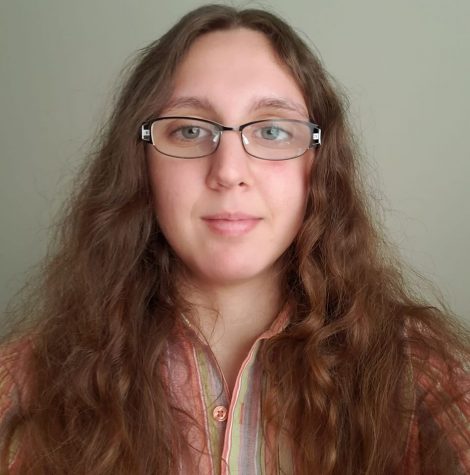
Jessica is an English Literature graduate who minored in History. Jessica started working as a reporter for The Saber/The Uproar during her first semester...




